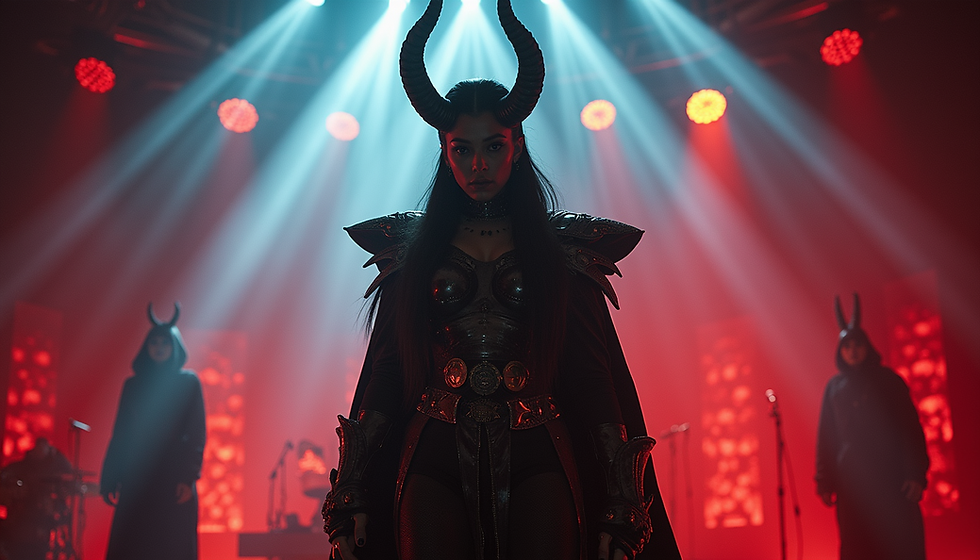Street Fighter
- Joseph Fanning
- Sep 14
- 5 min read
Street Fighter is one of the most iconic and influential fighting game franchises in the world, with its roots deeply embedded in both the video game industry and global pop culture. Since its debut in the late 1980s, Street Fighter has become a cornerstone of competitive gaming, giving rise to countless sequels, spin-offs, and adaptations across various media platforms.
The Birth of Street Fighter
The first Street Fighter game was released by Capcom in 1987. It was a groundbreaking title that introduced a revolutionary control scheme with six buttons, each corresponding to different strength levels of punches and kicks (light, medium, and heavy). The original game featured two playable characters, Ryu and Ken, both of whom would go on to become staples of the franchise.
However, the game was relatively clunky and lacked the fluidity that later entries in the series would develop. The arcade version of the original Street Fighter wasn't as successful as its successors, but it did lay the groundwork for future innovation in fighting games.
Street Fighter II – The Game-Changer
The true revolution came in 1991 with the release of Street Fighter II: The World Warrior. This sequel introduced a refined control system and a roster of diverse characters with unique fighting styles. This was the game that turned the series into a global phenomenon.
In Street Fighter II, players could choose from eight characters, each with a distinct fighting style, including
Ryu and Ken (Shotokan Karate),
Chun-Li (Chinese Kung Fu),
Blanka (Brazilian Jiu-Jitsu and animalistic fighting style),
Zangief (Soviet wrestling),
Guile (American military style, inspired by the real-life martial art of American Kenpo),
E. Honda (sumo wrestling),
Dhalsim (Indian yoga and stretchy limbs),
Balrog, Vega, Sagat, and M. Bison (the game's primary antagonists).
The game's combination of simple controls, distinctive characters, and strategic depth (including special moves like Hadouken and Shoryuken) made it accessible yet competitive. Street Fighter II's arcade success was so monumental that it led to multiple revisions (e.g., Champion Edition, Turbo, and Super Street Fighter II) and laid the foundation for future competitive fighting games.
Innovation and Legacy
Street Fighter introduced several innovations to the fighting game genre:
Special Moves: Ryu’s iconic Hadouken and Shoryuken, and other character-specific techniques, became the hallmark of the franchise. These special moves were executed through combinations of directional inputs and button presses.
Combo System: Street Fighter II is credited with popularizing the concept of combos—stringing together multiple attacks in quick succession to deal massive damage.
Competitive Play: Street Fighter’s success in arcades helped foster the competitive gaming scene, with players gathering at tournaments, forming communities, and striving for mastery of each character.
Street Fighter III and Beyond
After the incredible success of Street Fighter II, Capcom released Street Fighter III: New Generation in 1997. Although it initially struggled with commercial success due to its exclusion of popular characters (like Ryu and Ken), Street Fighter III was critically acclaimed for its deep mechanics and was influential in the development of competitive fighting games. The parry system and the introduction of new characters like Alex and Chun-Li's return were notable features.
Street Fighter III would eventually get updated versions, including 3rd Strike, which remains one of the most beloved and technically demanding fighting games in competitive history.
The Street Fighter IV series (released in 2009) brought the franchise back to prominence, incorporating 3D graphics but maintaining the core 2D gameplay mechanics that fans loved. It was widely praised for its accessibility, vibrant visuals, and the introduction of ultra combos and focus attacks.
Street Fighter V, released in 2016, aimed to modernize the gameplay with new features like the V-System, allowing characters to perform unique abilities. Though it faced some controversy at launch (particularly regarding its lack of content), it eventually grew into a beloved entry in the series, hosting a major role in the Capcom Pro Tour, an official competitive circuit for Street Fighter players.
Street Fighter Characters—Icons of Gaming Culture
One of the most defining aspects of Street Fighter is its legendary cast of characters, many of whom have become pop culture icons. The central figures like Ryu, Ken, and Chun-Li are not only synonymous with fighting games but have also appeared in TV shows, movies, comics, and other media.
Ryu, the wandering martial artist, represents the spirit of discipline and the pursuit of self-mastery, making him one of the most iconic characters in gaming. His rivalry with Ken, his longtime friend and training partner, forms the emotional core of the series.
Chun-Li, the first female fighter in the series, became a symbol of empowerment in gaming. Known for her speed, powerful kicks, and investigative background, she remains one of the most popular and respected characters in the franchise.
Other characters like Guile, M. Bison, Akuma, and Cammy have also carved their own legacies, each with their own unique fighting styles, stories, and personalities.
Street Fighter’s Impact on Competitive Gaming
Street Fighter is one of the pillars of eSports, especially in the fighting game community (FGC). Its competitive tournaments, such as the Capcom Cup and EVO (Evolution Championship Series), attract top-tier players from around the world. Street Fighter IV and Street Fighter V were among the most-played fighting games in major eSports events, making Capcom a leader in competitive gaming.
Additionally, the Street Fighter II arcade release helped establish the genre's competitive nature, leading to the foundation of tournaments and online communities centered around mastering the game's mechanics and strategies.
Street Fighter in Popular Culture
Street Fighter’s cultural reach extends far beyond the gaming world. The series has inspired:
Movies: From the live-action Street Fighter (1994) starring Jean-Claude Van Damme to animated features like Street Fighter II: The Animated Movie (1994), the franchise has been adapted into various forms of media.
Television: The franchise had an animated series, Street Fighter II: V, that aired in the late 1990s and captured the spirit of the game.
Comics and Manga: Street Fighter has been the subject of numerous comic books and manga series, delving deeper into the characters' backstories and expanding the lore.
Merchandise: Action figures, apparel, posters, and other memorabilia have kept the Street Fighter brand alive for decades.
Conclusion | Street Fighter
Street Fighter's influence on the fighting game genre is immeasurable. From its humble beginnings to becoming a mainstay in both the arcade and eSports scenes, Street Fighter has shaped the development of competitive gaming and left a lasting legacy in the cultural zeitgeist. As it continues to evolve with new releases like Street Fighter VI (2023), Street Fighter remains a beloved series that resonates with both long-time fans and new generations of players.
If you're a fan of fast-paced, strategy-based fighting games, Street Fighter is an experience you can't miss.
Joe aka MoeJoe is an orange belt and trains at RKA Academy.










Comments